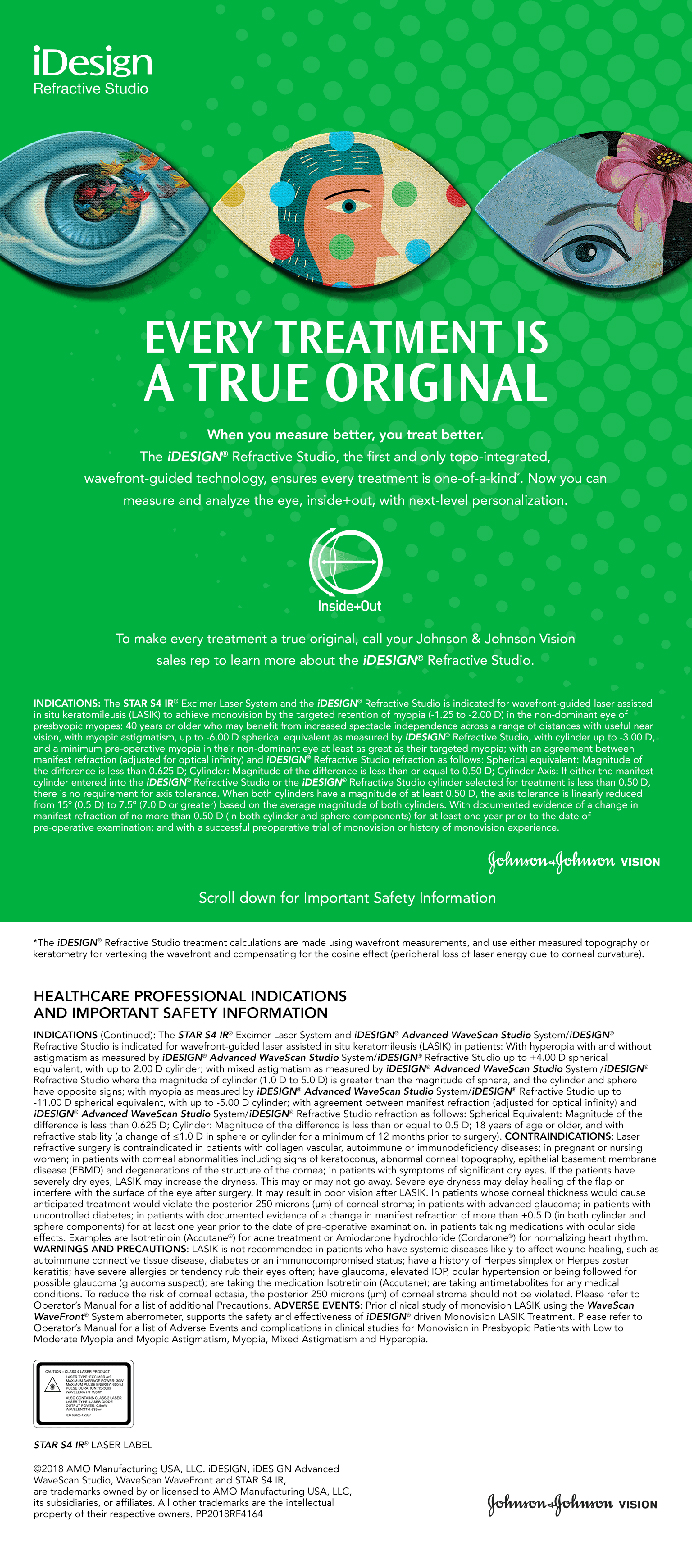Amniotic membranes are not often a top-of-mind treatment option when clinicians encounter patients with ocular surface disease (OSD) before cataract or refractive surgery. However, as the popularity of this option grows, optometrists who are collaborating with surgeons should be able to identify patients who are suited for amniotic membrane placement, know the differences between cryopreserved and dehydrated amniotic membranes, and understand how this technology can fit into a collaborative care framework.
IDEAL PATIENTS
Treatment options for OSD have expanded significantly in the past decade and will continue to expand as products in the pipeline come to market. As the number of available treatments rises, clinicians’ understandings of which patients are best suited for which therapies must become more nuanced. Patients who are awaiting surgery but who have OSD that prevents accurate presurgical workup may be candidates for amniotic membrane therapy.
Given the antiinflammatory properties of some amniotic membranes, patients with severe inflammation who wish to avoid the risks of steroid use are among the ideal patients to receive this therapy. Patients with recurrent corneal erosion and those with potential epithelial basement membrane dystrophy are also good candidates for amniotic membrane insertion.
Some clinicians may be inclined to place a bandage contact lens in patients with pathologies that could be treated with amniotic membrane. The drawback to a bandage contact lens compared with an amniotic membrane is that the former merely protects the eye from further damage, while the latter actively rehabilitates the eye. Protection without therapy may be warranted in some cases, but the clinician considering use of a bandage contact lens should pause to consider use of an amniotic membrane instead.
MEMBRANE OPTIONS
Commercially available amniotic membranes are prepared in one of two ways: either cryopreserved or dehydrated. I carry and use both types in my practice, as each has benefits and drawbacks.
Although both classes of membranes come from amnion (the inner layer of the sac that protects the embryo while in utero), the process by which they end up in your practice differs.
Dehydrated membranes undergo different drying processes which may include freeze drying, which results in the loss of heavy chain hyaluronic acid (HCHA) and pentraxin 3 (PTX3). A bandage contact lens is needed to secure a dehydrated membrane, and this form is particularly well suited for wound covering.
Cryopreserved membranes are kept in a state similar to amnion, which preserves HCHA and PTX3 compounds. Cryopreserved membranes require no bandage contact lens to keep them in place, and the entire membrane and the ring that serves as its scaffold must be placed inside the eye.
Given that the antiinflammatory properties of amniotic membranes are based on the presence of HCHA and PTX3, cryopreserved membranes are best suited for protection and healing rather than covering of a wound.
Patients comfort varies with each type of membrane. Some find the bandage contact lens associated with dehydrated membranes uncomfortable; others find the placement of a large plastic ring with the cryopreserved amniotic membrane on the ocular surface unpleasant. Patients should be prepared for the possibility of discomfort after placement and should be encouraged to return to their doctor if symptoms worsen or if discomfort is elevated or sustained.
PATIENT EDUCATION
Optometrists who do not use amniotic membranes but who identify a candidate for membrane placement should consider referring that patient to a clinician whose practice has experience with this technology. This is particularly true of patients with OSD whose surgery will be delayed until their ocular surface is optimized. If such as patient is sent to a collaborative care surgical center where an optometrist can place a membrane to quickly repair the ocular surface and prepare the patient for presurgical evaluation, that patient is likely to return to his or her original optometrist happy and healthy.
Given the chronic nature of OSD, referral to an optometrist for membrane therapy does not mean that a patient will be permanently transferred from the referring doctor’s office. Rather, the patient will return to their original doctor for long-term followup to address OSD.
THE RESET BUTTON
For some patients, use of an amniotic membrane is akin to hitting a reset button on their ocular surface. Although they may experience initial discomfort, the therapeutic benefit of the membrane will heal the ocular surface to the point that long-term care for OSD can be effective.






